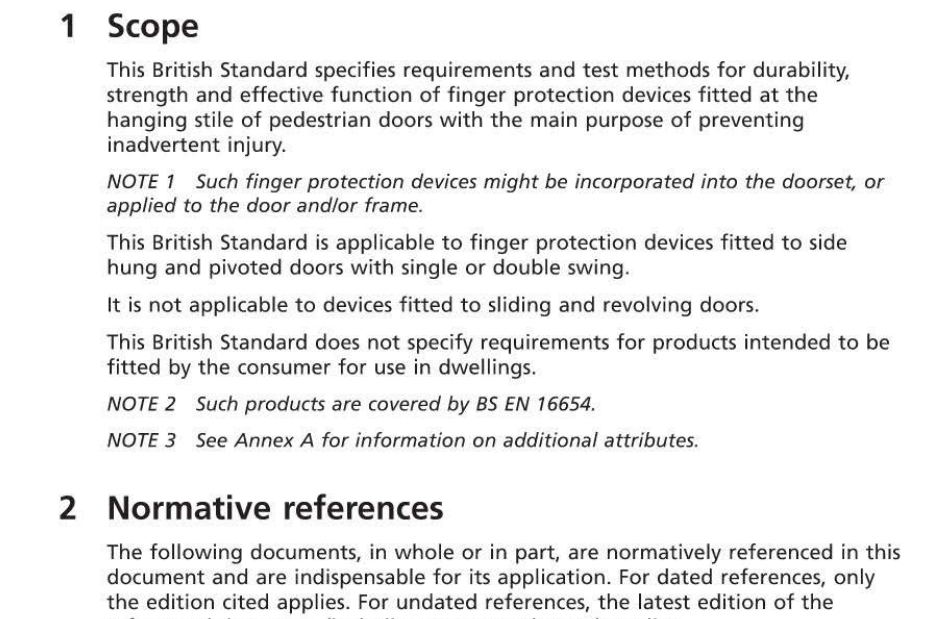BS 8613:2017 pdf download.Finger protection devices for pedestrian doors – Specification
1 This British Standard specifies requirements and test methods for strength and effective function of finger protection devices fitted at the hanging stile of pedestrian doors with the main purpose of preventing inadvertent injury. NOTE 1 Such finger protection devices might be incorporated into the doorset , or applied to the door and/or frame. This British Standard is applicable to finger protection devices fitted to side hung and pivoted doors with single or double swing. It is not applicable to devices fitted to sliding and revolving doors. This British Standard does not specify requirements for products int ended to be fitted by the consumer for use in dwellings. Such products are covered by 85 EN 16654. NOTE 2 See Annex A for information on additional attributes.
3 For the purposes of this British Standard , the following terms and definitions apply.
dwelling building or part ther eof used for domestic habitation
3.1 finger protection device
device intended to minimize the ri sk of crushing injuries to fingers in the gap between the hanging stile of the door leaf and the door frame
3.2 type A device
finger protection device fitted to the door and/or frame to shield the gap between the door and frame
3.3 type B device
finger protection device that is an integral part of or attached to the door and/or frame to reduce the gap between door and frame
7.4.2.1 Prevention of finger entrapment test
Open the door to an angle of (35 +5)°. Use the finger probe (see Figure 2) to gradually apply a force of 25t N horizontally at three onerous positions on that part of the device intended to provide protection, but not within 12 mm of each end. If the probe enters into a space which might cause entrapment, allow the door to close while maintaining the force. Check whether the probe is trapped between the door leaf and the door frame, device and leaf, device and frame or within the device itself. Repeat this procedure with an opening angle of (90 +5)°. Repeat three times at the start, middle and end of the durability test. The probe shall be regarded as trapped when it cannot be removed by a force of not more than 12 N.
7.4.2.2 Deformation test
Open the door to an angle of (105 +5)°. Use the finger probe (see Figure 2) to gradually apply a force of (75 +2) N horizontally and parallel to the door frame (see Figure 1) at the most onerous position on the surface of that part of the device intended to provide protection. Remove the probe and check the door closes fully into its frame. Repeat three times at the start, middle and end of the durability test.
BS 8613:2017 pdf download
